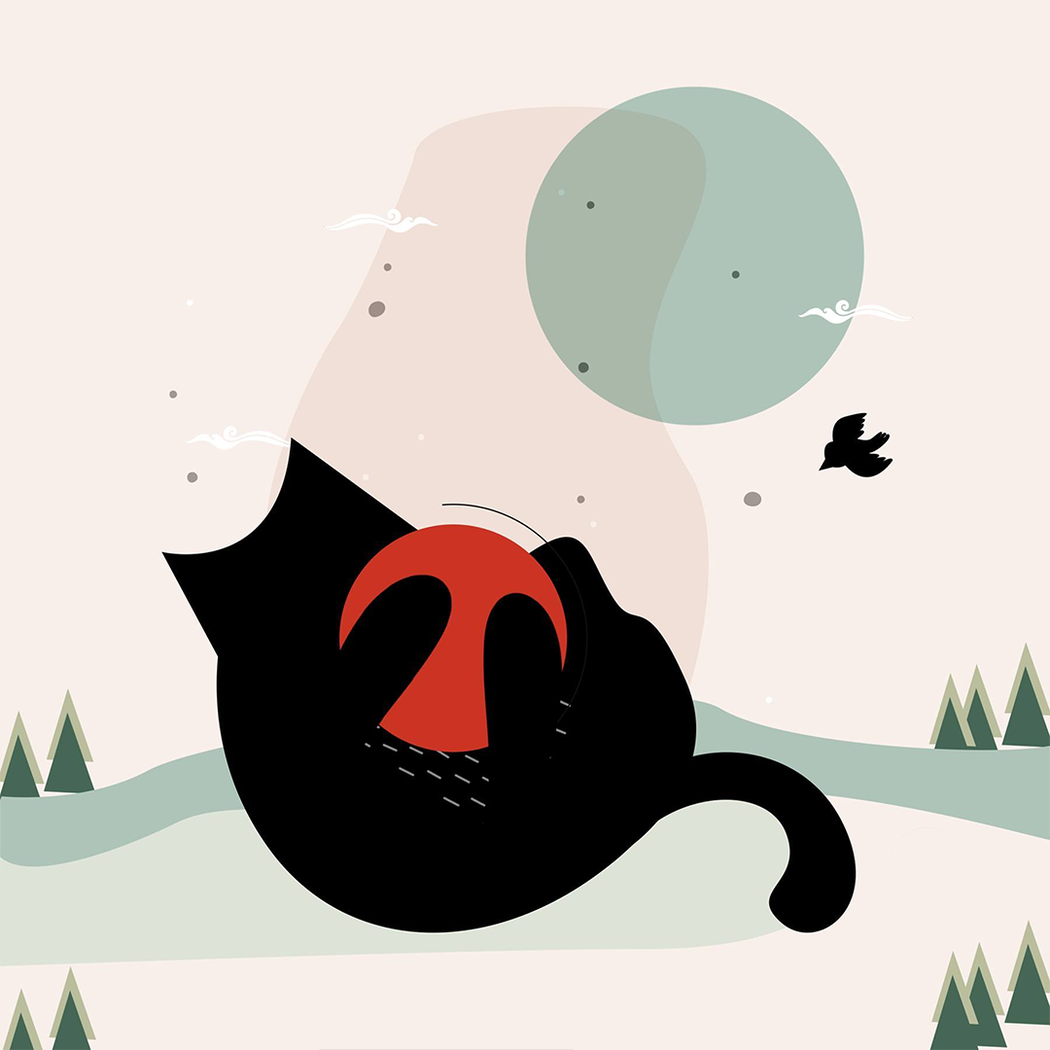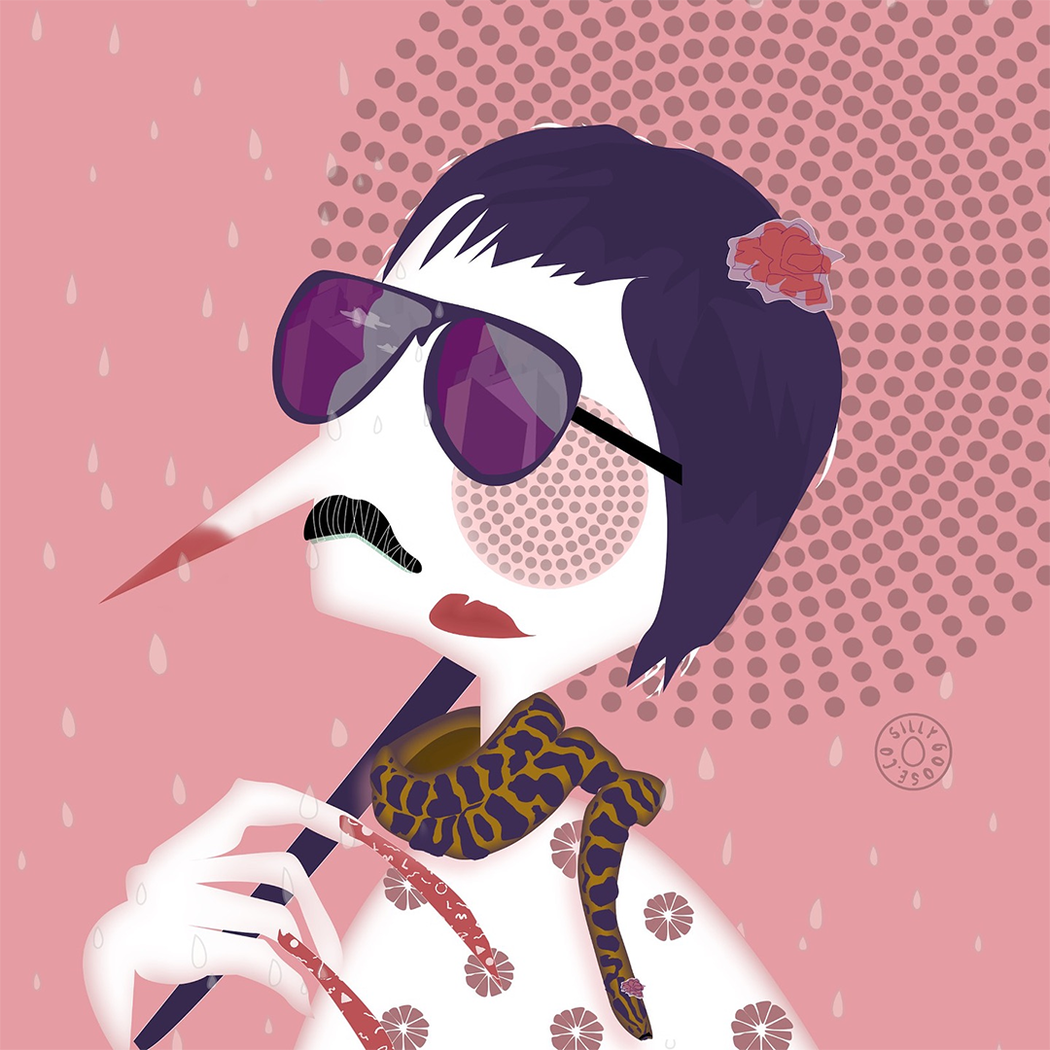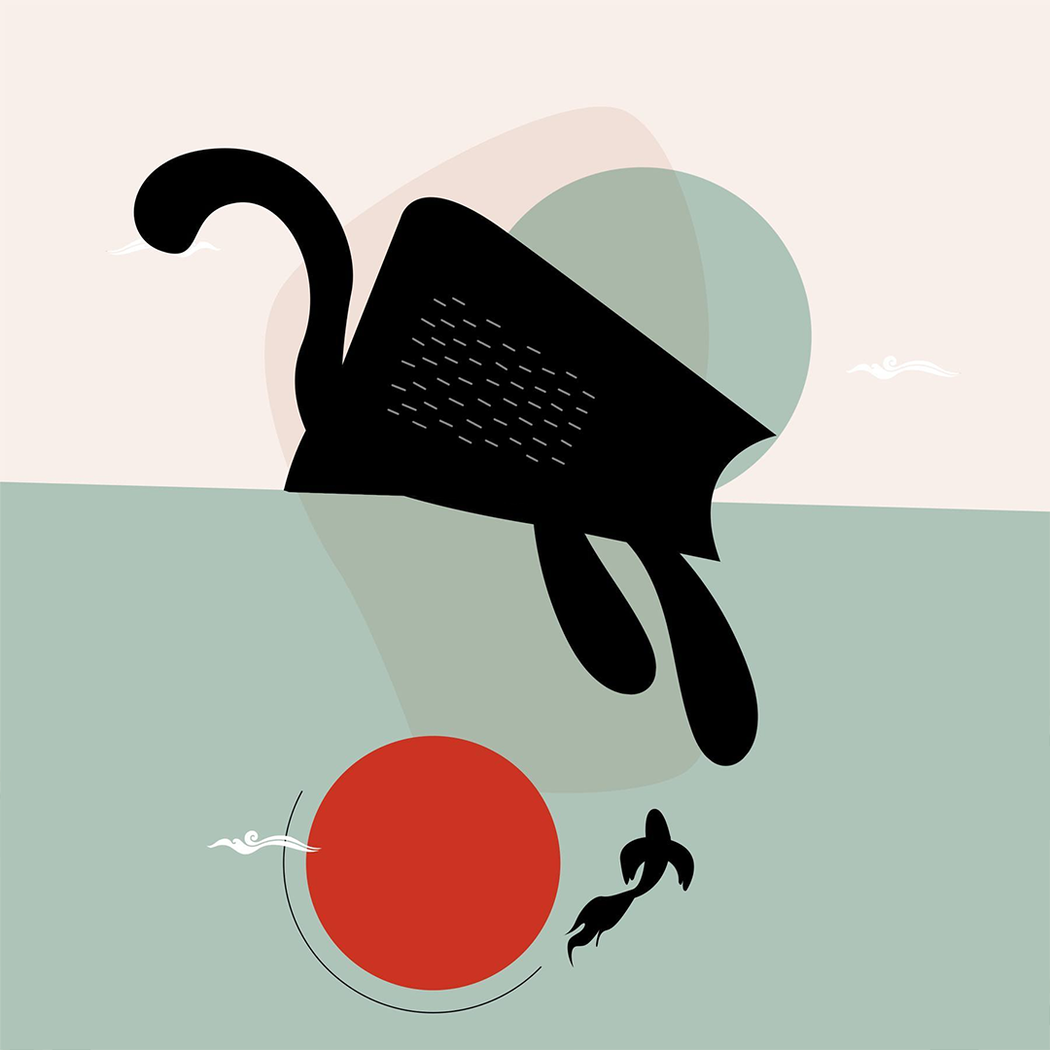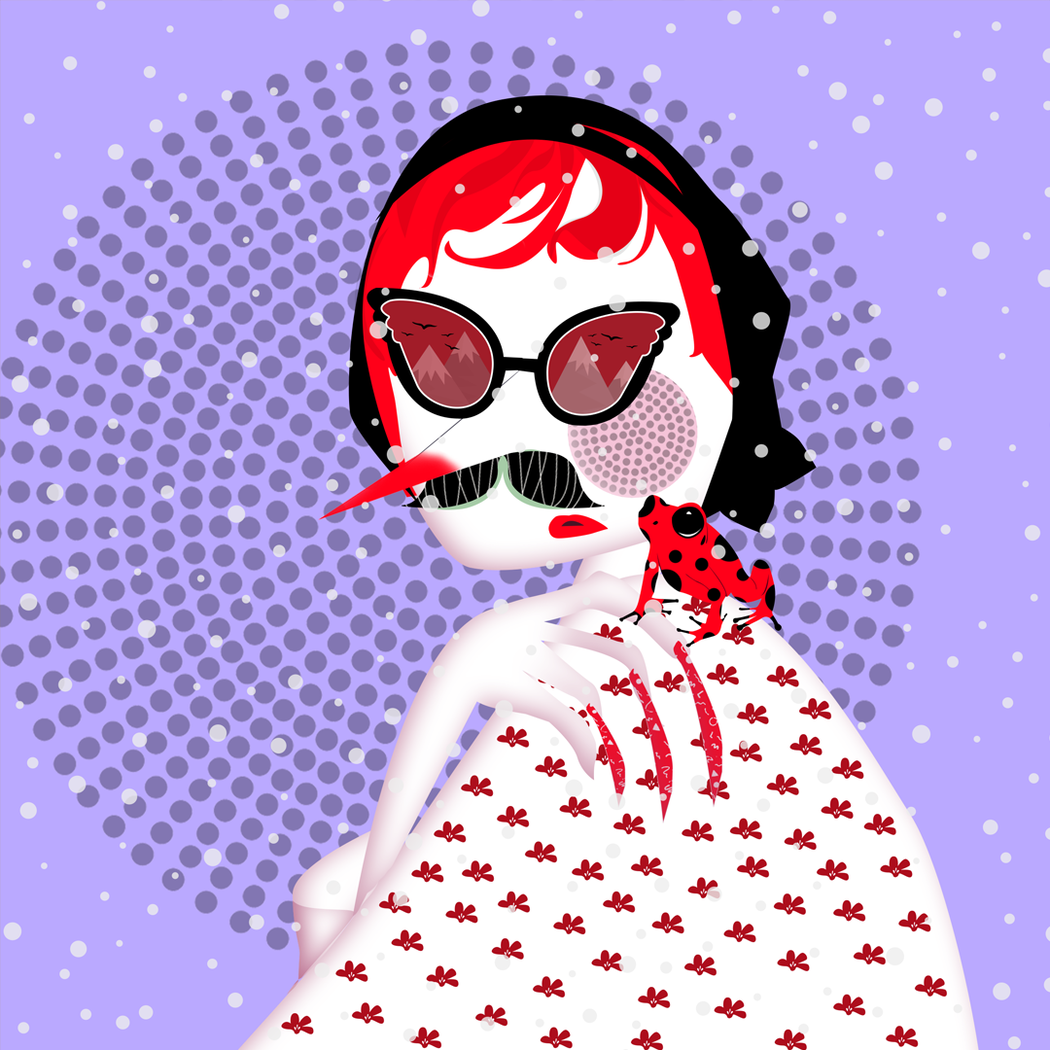Sillygoose
Describe your art in three words: Incisive, elusive, contemplative.
Your discipline: Conceptual illustration, spatial distortion, visual inference.
Location: The Island of Malta.
Website | Instagram
Your work exists in a space of calculated restraint and complexity. How do you decide what remains and what disappears?
Art is an act of intentional formulation as much as omission. Each form is an argument for its own necessity. Each absence is a silent interlocutor in the dialogue of composition. I do not believe in ornamentation for its own sake, every element that lingers must serve an unspoken purpose that is effable only through its placement. There is a rebellious nature to bridled insistence, that meaning need not announce itself in grandiloquence but rather reside between what is revealed and what is withheld.
For me transience is at the heart of my decision-making. A work must possess a fleeting equilibrium. It gives the most impression of something momentary yet immutable. I do not consider imposing clarity but rather to allow meaning to hover just beyond the grasp of certainty. A stroke removed a pause in composition or an imperfection left intact. These are not deficiencies but deliberations and a way of allowing a piece to breathe without suffocation from excess.
 Sillygoose | Playtime | 2024
Sillygoose | Playtime | 2024
In your first series, a cat is caught in perpetual pursuit—never quite reaching, never quite possessing. What does this motif signify?
There exists an alchemy in pursuit—the manner by which it transfigures mundanity into ritual, turning motion into something near-sacred. Watch a cat hunt and see that its purpose isn’t to possess but to sustain the dance of the hunt. The creature is not compelled by possession but by the primal need of the “almost”. It craves that exciting space between intention and outcome where potential hums like a live wire. in a way it’s like climbing a mountain and knowing that the beauty isn’t in the summit but in that final ledge where the peak still breathes mystery
Your second series features figures that seem both exposed and withheld, immersed in a world of patterns and distortions. Who are they?
They are effigies of perception, They are both delineated and obscured, present yet unknowable. They are present among us at every corner of life yet never truly knowable. Each face with masks and each gaze hidden behind tinted lenses resists cognizance. They are constructs of their surroundings. Their silence is deliberate. In some part they are others and in many ways they are our own reflections.
I am interested in the architecture of concealment—how identity is shaped not only by what is shown but by what is withheld. These figures do not beg for recognition nor do they fall into obscurity. They exist within a paradox like a contrived middle ground between self-possession and dissolution. They are both the observer and the observed, neither fully revealed nor entirely veiled.
 Sillygoose | Covertly Cute | 2024
Sillygoose | Covertly Cute | 2024
Absence is a recurring force in your work. How does it shape your compositions?
Absence shapes meaning. To remove does not mean to diminish but it is to refine. When Art explains itself too easily, too literally, it denies the viewer the privilege of contemplation. Meaning isn’t something to be handed over; it’s something to be approached.
There is an intrinsic liveliness to incompleteness. It’s a quiet promise that what’s missing might still be found. It’s found in the act of looking, not in the image itself. This isn’t about negating the form , it’s about calling the observer to linger within the recesses of what is apparent and implied in the artwork. The mind naturally wants to fill in the gaps, to make sense of what isn’t there, turning the act of viewing into a participatory act. I don’t believe in imposing meaning; I create spaces where meaning can be unfolded.
Your approach to color is strikingly restrained, yet every hue seems deeply intentional. How do you construct your palettes?
Color is not to be an afterthought—it is a structural imperative. It creates movement, establishes weight and dictates the overall perception. For me restraint in palette is not an aesthetic limitation but a discipline. It’s a means of refining impact. When options are curtailed, each hue must possess greater integrity, each tone must be excogitated to hold its place in the visual lexicon of the piece. I firmly believe that we excel under constraints and it’s part of our nature to make the most of what we can. There is a happiness to it and a joy in solving a problem in scarcity. This is especially true in today’s world of excesses, overexposure and overstimulation.
I hold a certain brevity to my color choices. They hover between recollection and dream, neither fully contemporary nor entirely nostalgic. I seek hues that suggest, rather than declare, that exist in a suspended state of recognition, familiar but unplaceable.
 Sillygoose | Serenity | 2024
Sillygoose | Serenity | 2024
Texture in your work operates like an undercurrent—sometimes barely perceptible, sometimes disruptive. What role does it play?
Texture is disrupted. Texture is a bump, it’s a roughness and an imperfection. A surface too pristine becomes sterile and artificial, and it denies the eye a place to Linger. I believe in irregularity with intent, creating a gesture that interrupts but does not overwhelm. These disruptions function as moments of recalibration forcing the perception to slow and adjust to register something beyond the immediate.
There is a sort of perfection in imperfection. A roughness, a non-symmetry, a crooked edge, a trace of process, these introduce a sense of time into the work. These “imperfections” acknowledge the human beneath even the most precise compositions. They make it real by connecting the screen and the canvas to a moment in reality. For me texture isn’t merely a surface quality but a conceptual one. Texture is the space where the work resists becoming a just an image and asserts itself as an experience.
Your compositions manipulate scale, repetition, and abstraction in ways that subvert expectation. What compels you toward this kind of distortion?
To distort is to liberate. Scale is not a passive thing, it is a negotiation and a means of dictating not just what is seen but how it is seen.
Just like texture and composition a form rendered in a very predictable way loses its potency. A figure positioned in too much of a comfortable position can no longer assert itself. I am interested in the tension that arises when expectation is silently subverted, when a repetition is imperfect, when elements are just slightly askew and when forms are asymmetrical.
Distortion is a form of recalibration, though many perceive it as chaos, it’s not.. It requires a balance and precision between control and accident, between intention and discovery. There is something almost playfully mischievous and inviting about shifting perception and making the familiar unfamiliar. to trigger a re-exploration of the known. A work of art should not just present itself, but it should unfold, revealing itself over time and to every eye that sees it. It should expose its secrets through reconsideration and through the act of returning glances.
 Sillygoose | Red Alert | 2024
Sillygoose | Red Alert | 2024
Your work resists resolution. What do you want the viewer to take away?
Resolution is just an illusion. The moment an Artwork is “Understood” it ceases to function as an experience. The most enduring works remain in a permanent state of unfolding. My purpose is not to seek to offer answers or offer them at all, All I seek is to provoke reconsideration.
If a viewer walks away with an unresolved thought, a sense of something that is just beyond articulation, then the work has succeeded. My interest is not finality but in reverberation. it’s in the quite persistence of an image that refuses to be neatly categorized. A work that does not linger as a conclusion but as a question that resists effacement.

Leave a Reply